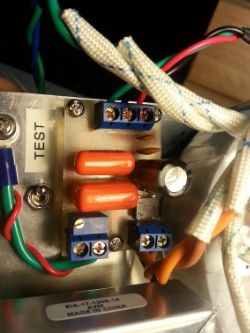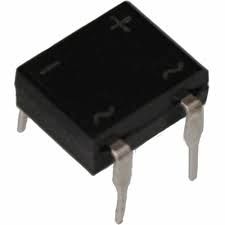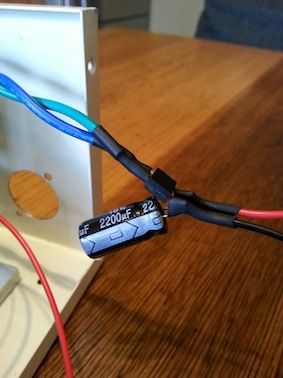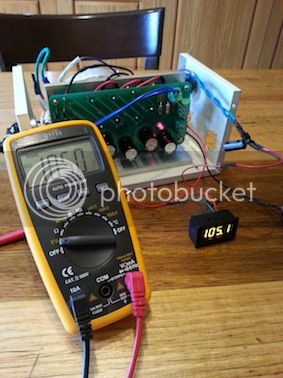...a final update on the voltmeter installation...(with power supplied from 6.3v AC secondary of Antek 05-T200 Transformer)
I decided to design and etch a little PCB (my first) for the voltmeter I installed on my PSU.

The process was fun and quite satisfying 8). I designed using the popular 'Eagle' software, printed onto some special 'Press n' Peel' paper and then used an iron to transfer the design onto some PC board. I etched using Sodium Persulphate. I'm sure I broke a few design rules with the layout and tracks, as I got a little impatient, but it seems to work just fine.
For anyone who is interested, the BOM was as follows:
On the 6.3v AC to DC Rectifier side:
1 x Bridge Rectifier DB104 DIL 1A 400V
1 x 16V 2200uf Electrolytic Capacitor (to remove ripple)
1 x 50V 0.1uf Ceramic Capacitor (as a bypass/filter cap)
1 x 50V 0.01uf Ceramic Capacitor (as a bypass/filter cap)
On the 105V supply DC 'measure' side:
1 x 5k (1/2 watt) trimpot (to allow adjustment of the 'measure' voltage the meter sees)
1 x 630V 0.1uf Sprague 'Orange Drop' Capacitor (as a bypass/filter cap)
1 x 400V 0.01uf Sprague 'Orange Drop' Capacitor (as a bypass/filter cap)
In/Out
2 x 2-way terminal blocks (one for 6.3V AC, and the other for earth/105V 'measure')
1 x 3-way terminal blocks (for the 3 meter wires (supply+, earth and 'measure')
I included the 5k trimpot to give me some adjustment on the meter reading. I have tried 3 different meters, and they were all inaccurate by up to 0.5V. I just turned the pot until the meter was reading the same as my DMM.
I put a couple of bypass/filter caps across the 105v section as a 'just-in-case' measure to prevent noise getting to the mic. (Chunger mentioned that he got a little bit of noise when installing a meter, which he fixed with a filter cap.)
Same goes for the smaller value caps on the 6.3v side, I'm sure they're not doing much but "just-in-case"...

Now to finish my mic and test!

Many thanks to Max, Zayance, Chunger and Matador for making this great project available! 8) 8)
If anyone wants a copy of the little PCB PDF file or schematic, send me a PM.








































